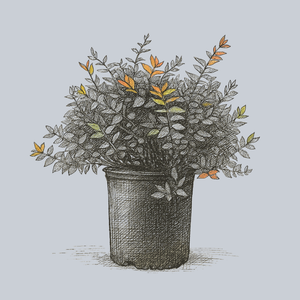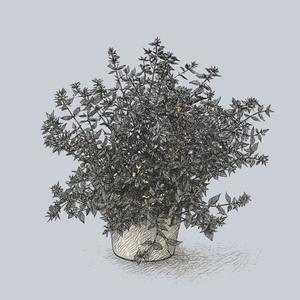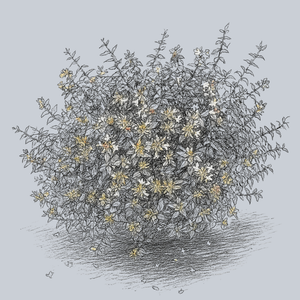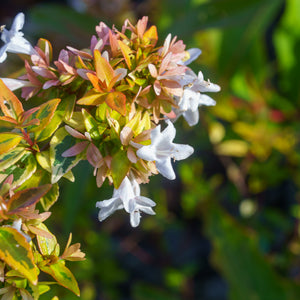The Abelia Guide
Abelia is a graceful genus of flowering shrubs known for their long blooming season, colorful foliage, and arching branches. With varieties ranging from compact mounding forms to larger, sprawling specimens, abelia brings continuous interest to the garden from spring through fall. The delicate, trumpet-shaped flowers attract pollinators, while many cultivars offer foliage that shifts colors with the seasons. Abelia's adaptability, resilience, and aesthetic value make it a staple in mixed borders, foundation plantings, and landscape designs.
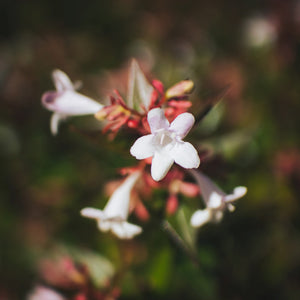
About
Abelia is part of the honeysuckle family (Caprifoliaceae) and includes both deciduous and evergreen species, most notably Abelia × grandiflora and Abelia chinensis. Native to eastern Asia and Mexico, these ornamental shrubs are prized for their long-lasting blooms, glossy foliage, and arching form.
Varieties such as Abelia grandiflora 'Kaleidoscope' offer year-round interest with foliage that transitions from golden-yellow in spring to orange-red in fall. 'Rose Creek' and 'Radiance' provide compact growth and dense flowering, while 'Canyon Creek' adds bronze-tinted foliage that matures to green with pink overtones. The fragrant, bell-shaped flowers range from soft pink to white, blooming from early summer into fall.
Abelia is also highly attractive to bees, butterflies, and hummingbirds. It makes a reliable foundation shrub, performs well in mass plantings, and can even be used as a low hedge or specimen plant in a formal or informal setting. Its natural disease resistance and tolerance to pruning enhance its usefulness in modern landscape design.
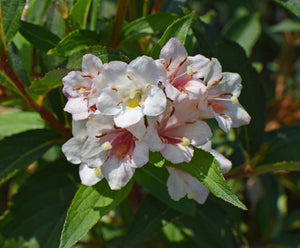
PLANTING
Abelia is easy to establish and adapt to a wide range of growing conditions with minimal intervention:
- USDA Hardiness Zones: Most varieties thrive in Zones 6–9; some may survive in Zone 5 with protection.
- Soil: Prefers moist, well-drained soil enriched with organic matter. Abelia tolerates a variety of soil types, including loam, clay, and sandy soils.
- Sunlight: Full sun to partial shade. For best blooming and foliage color, aim for at least 6 hours of sunlight daily.
- Watering: Moderate. Water regularly during the first growing season to establish deep roots, then reduce to occasional watering as needed.
- Spacing: Space plants 3–5 feet apart, depending on the mature size of the variety.
- Planting Time: Spring and early fall are ideal to give roots time to establish before temperature extremes.
When planting abelia, dig a hole twice as wide as the root ball and as deep. Place the shrub in the hole, backfill with enriched soil, and water thoroughly. Mulch around the base to retain moisture and suppress weeds.
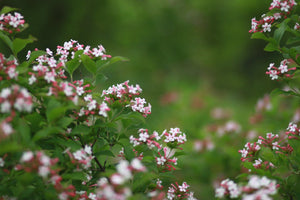
CARE
Abelia is a low-maintenance shrub that benefits from occasional care to maintain vigor and appearance:
- Watering: Once established, abelia is relatively drought tolerant. Water deeply during dry spells, especially in the heat of summer.
- Fertilizing: Apply a balanced, slow-release fertilizer in early spring. A second light feeding in midsummer can promote continued blooming.
- Pruning: Light pruning can be done after the flowering season to shape the plant and remove spent blooms. Rejuvenation pruning, removing older canes to the ground, is best done in late winter or early spring.
- Mulching: Maintain a 2–3 inch layer of mulch around the base to conserve moisture, regulate soil temperature, and prevent weeds.
- Pests & Diseases: Abelia has few pest problems but monitor for aphids or spider mites. Good air circulation and watering at the base of the plant help prevent fungal issues.
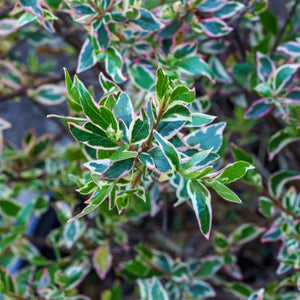
HOW TO USE
Abelia’s multi-season appeal and versatile size range make it suitable for nearly any garden application:
- Foundation Plantings: Compact varieties like 'Little Richard' and 'Compacta' work well at the front of homes and buildings.
- Mixed Borders: Combine abelia with evergreens, ornamental grasses, or flowering perennials such as echinacea, salvia, and rudbeckia for visual contrast.
- Pollinator Gardens: Use cultivars like 'Edward Goucher' or 'Ruby Anniversary' to attract butterflies, hummingbirds, and bees.
- Specimen Plantings: Larger varieties like 'Canyon Creek' or 'Vanilla Brandy' make elegant focal points with season-long foliage color.
- Low Hedges: The dense growth of 'Rose Creek' and 'Radiance' makes them ideal for tidy, low hedges along walkways or garden edges.
Consider pairing abelia with hydrangea, boxwood, or spirea for a balanced, layered planting. The arching branches and prolonged bloom provide contrast in both formal and casual designs.

Common Questions
- When to prune abelia? Late winter to early spring is best for structural pruning. Light shaping can be done after flowering.
- How to prune an abelia? Remove dead or weak stems and shape the plant by cutting back up to one-third of the branches. For older plants, rejuvenate by cutting one-third of the oldest stems to the ground.
- Is abelia an evergreen? Some varieties are evergreen in warmer climates (Zones 7–9), while others are semi-evergreen or deciduous in cooler zones.
- Do deer eat abelia? Abelia is considered deer-resistant, though no plant is completely immune in times of scarcity.
- Are abelia poisonous to dogs? Abelia is generally not considered toxic to dogs.
- Are abelia poisonous to cats? Abelia is not listed as toxic to cats by the ASPCA.
- Do rabbits eat abelia? Abelia is typically not favored by rabbits, making it a safe option for rabbit-prone areas.
Conclusion
Abelia is an adaptable and long-blooming shrub that adds elegance and function to any garden. With its graceful arching habit, colorful foliage, and pollinator-friendly blooms, it works well in formal borders, foundation beds, or mixed shrub plantings. Whether you choose the vibrant foliage of 'Kaleidoscope' or the refined blooms of 'Edward Goucher', abelia brings year-round interest with minimal maintenance.
The Abelia Collection
Sold Out
Sold Out
Sold Out
Sold Out
Sold Out

